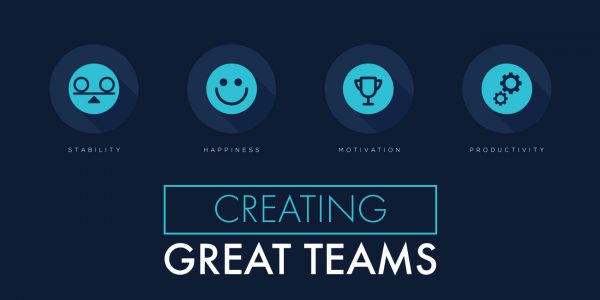written by Henric Johansson, Agile Coach.
Great products are nearly impossible to build if you can’t get your team to work well together. After all, a well-built team focuses on the way they collaborate and works to create value for the customers. At Derivco Sweden, we believe in stable, self-improving teams that, together, become great at what they do – experts in the products they build and the technology they use.
Depending on business requirements, we tend to do team changes once or twice a year and, in the past, these changes were decided upon by the management team. Each time the management team sat together and drafted a plan that we believed would work. Maybe it did, maybe it didn’t. This time, however, we decided to do something different and let the teams decide for themselves.
Self-selection for the win
Inspired by the book “Creating Great Teams: How Self-Selection Lets People Excel” by Sandy Mamoli and David Mole, Javier Camarasa and myself set out to organise Derivco Sweden’s first Self-Selection workshop: an opportunity for all team members to decide for themselves what product they want to work on and who they want to work with.
According to the book and the people who have done this before us, self-selected teams are:
- Happier
- More Stable
- More Productive
- More Motivated
So, how did we do it?
As our developers are experts at solving problems, we thought why not ask them! We looked at our products and the roadmap and decided how many teams we would need and how big they needed to be. We also defined what skills and technologies were needed for all products. This was an important part of the puzzle.

The skills we defined were:
- Backend
- Frontend
- Test
- Infra
- Scrum Master
- DevOps
- BI
- UX
These skills made sense to us; they’re not too specific and not too generic. We started with a bigger, more detailed list, but realised that the puzzle would become too difficult to solve. We also believe that if you had an interest in a specific area, you would grow into that and still be able to provide value to your team. Everyone was to make a self-assessment of their skills in the areas defined above, and in preparation, we asked the staff to ask themselves three questions advance.
Self-selection questions:
- What can I teach and provide?
- What can I learn and grow?
- Where do I want to be in a few years?
These question were to be pondered and later discussed with their closest manager prior to the workshop. The purpose was to have everyone come prepared to the event, knowing what they can bring to a team and where they can grow.
We also agreed to some general constraints for all teams; they should be capable of delivering their product on their own and they should not be bigger than 3-5 people (unless otherwise specified). This was based on the number of teams we needed and the staff available to us at the time of the workshop. Plus, we believe that small teams are able to focus better and collaborate easier. This, of course, needs to be weighed against the vulnerability of small teams.
We were in the middle of a restructure of both process and organisation, and team changes were coming whether we wanted them to or not. We knew what product we needed to focus on and all that was missing was how to fill the team to build them.
The self-selection workshop
We prepared a corner of the office to have the workshop. On the walls were posters of all the teams and descriptions of the products. Each participant got a photo of themselves and some coloured dots to indicate what skills and interests they would bring to a team.
First we had the Product Owners go up and pitch their product, to ensure that everyone was on the same page. The selection process itself was iterative – we did five rounds in total, after each we had a look at all teams to see if they were formed or not.
To emphasise that all of us are in it to create a working organisation, together, and not just look out for one’s own needs and wants, we agreed beforehand that the exercise was not completed until all teams was formed.
In the end
Forming all teams turned out to be a bit hard, mainly since we had a lot of teams to fill and not enough staff. We did anticipate this though, and created a few “vacancy cards” that we pulled out at the end to fill the gaps that we couldn’t fill ourselves. On the positive side, we now have a pretty decent idea as to which teams to recruit for and the skills those teams are looking for.

